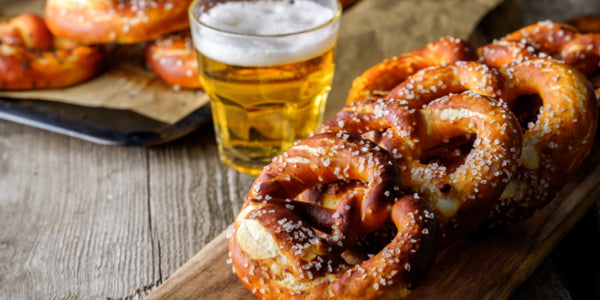
To tame that midafternoon stomach growl, you opted for those sugary cookies leftover in the break room or carb-rich chips from the vending machine. Instead of alleviating hunger, your stomach continued to cry out for food.
So do carbs make you hungry? What about sugar?
If always hungry after eating, ensure these foods that make you hungrier are limited when hunger calls!
Understanding Hunger
In its simplest use of the word, hunger is a physical need for food and a prompt to eat.
Unlike cravings, which are often the psychological desire for those so-called "comfort foods," hunger is often not exclusive to one food and individuals likely feel satisfied after eating. If left unmanaged, hunger results to a growling stomach, headache, and loss of energy.
Hunger is mostly the result of not eating for a longer bout of time, in which the brain senses changes in energy levels, hormones, and available nutrients.
But even after seeking out sustenance to alleviate a strong appetite, hunger can ironically be elevated by these foods that make you eat more.
10 Foods that Make You Feel Hungry
1. Breads, Pastas, and Crackers
Whether snacking on crackers at your desk or the bread basket at the dinner table, foods laden in refined carbs can actually provoke additional hunger. Unlike whole grain products, refined carbs are stripped from satiating fiber and valuable nutrients.
When breads, pastas, crackers, and other products rich in refined carbs are consumed, the body releases insulin. The connection to insulin and hunger is quite strong, as insulin facilitates the entry of glucose from the blood to the cells to use as energy.
Ultimately, the body will crave more food to balance out this drop in blood sugar and make you feel hungrier.
Satiating Tip: Swap out refined pastas with whole wheat substitutions to elevate fiber content.
2. Sweet Treats and Pastries
Can’t seem to keep your hands out of the cookie jar? The sugar in sweet treats and pastries may be driving your hunger.
“But how does sugar make you hungry?” you may wonder. In addition to spiking insulin in similar fashion of refined carbs, sugar activates the pleasure and reward centers of the brain and makes us feel good. And especially overtime, a high intake of sugar can tarnish hunger and satiety cues and heighten cravings.
Satiating Tip: Enjoying a cookie should be viewed as a treat, rather than a food to defeat hunger. If craving something sweet, snack on the natural sweetness of a piece of fruit.
3. Breakfast Cereals
While breakfast cereals used to be a breakfast classic, sales dropped when the sugar content did. To make its sweet comeback, manufacturers are increasing the sugar content in attempt to win back consumers according to a report by The Wall Street Journal.
Though also dependent on how you so wish to fill your bowl, sugary cereals contain an average of 15 grams of sugar per serving. To put this in perspective, the American Heart Association encourages men and women to consume no more than 38 and 25 grams of added sugar per day, respectively.
Cereal rich in carb and sugar and low in fiber can cause blood sugar to spike only to quickly drop, which tends to lead to mid-morning cravings and moodiness. And considering sticking to just one serving may not be, a large bowl of cereal may cap or exceed you over the AHA’s recommendation.
Satiating Tip: Choose a cereal with at least 3 grams of fiber per serving, which may include an oatmeal or bran variety.
4. Salty Snacks
Pretzels, chips, and other salty snacks are often rich in carb and devoid of nutritional value.
What’s more, salt can drive hunger by stimulating thirst. People often mistake hunger for thirst, thus causing them to reach for food over water.
Satiating Tip: Keeping hydrated can quench thirst and deter the risk of snacking on food in absence of pure hunger.
5. Fast Food
According to the NY Post, fast food sales are growing faster than the U.S. economy. While some chains are offering healthier menu options, fast food is designed to keep you hungry.
To deepen the craving… The red signs of McDonalds, Wendy’s, and Pizza Hut might not be so coincidental and actually quite psychological. While the warrant is still out on how does the color red make you hungry and if it actually does, hypothesizers do suggest it evokes stroke emotions thus encourages appetite.
Satiating Tip: Rather than continuously resorting to drive thrus, make it a point to prepare a nutritious meal at home most days of the week. As a general rule of thumb, fill at least half the plate with veggies, a quarter with a lean or plant-based protein, and complement with a whole grain and healthy fat source.
6. Single-Serve Yogurts
Unlike popular belief, yogurt may not be the most healthful snack to alleviate hunger pangs. Particularly of the flavored variety, yogurts can be laden in sugar and leave you feeling less than satisfied.
Satiating Tip: Choose a plain Greek yogurt rich in protein and top with fiber-rich fruit, including berries and apple slices.
7. Fruit Juices
Fruit juices appear innocent, though they often are laden in both added and natural sugars.
But even fresh, cold-pressed juices are of concern. While they do offer some nutritional value, the removal of fiber paired with a sugar content can lead to sharp blood sugar fluctuations and lead to hunger pangs not shortly after.
Satiating Tip: Nosh on a piece of fruit over drinking juice.
8. Fruit Smoothies
Think smoothies are a healthy alternative to fruit juices? Think again.
Yes, the blended fruits and veggies are nutritious, but smoothies often lack an ample protein source. This can lead to quick energy that only plummets and leaves you hungry within the next hour or two.
Satiating Tip: Blend in milk, Greek yogurt, cottage cheese, peanut butter, chia or flax seeds, and other satiating ingredients like in this chocolate banana protein smoothie. Pouring the smoothie into a bowl, adding berries, granola, shredded coconut, pecans, and other favorite toppings, and eating with a spoon can also be more satisfying than drinking on-the-go.
9. Diet Soda
In attempt to moderate sugar intake, you opt for a diet soda. While the effort deems rational, consuming diet soda artificial sweetener may actually cause you to feel hungrier and even lead to weight gain.
Though the two are vastly different in chemical structure, artificial sweetener may trick the body into believing sugar is present and release insulin. And remember, there is a not-so-sweet connection between insulin and hunger…
Satiating Tip: Limit or stray away from soda altogether, as hydration should ideally be sourced from water. If desiring a little extra flavor, infuse the water with fresh fruits and herbs.
10. Alcohol
Drinking alcohol not only places health risks, especially in the excess, but increases hunger and appetite. Alcohol can stimulate hunger by lowering blood sugars and inhibitions, especially on the effect of leptin and glucagon-like peptide-1 (GLP-1) – leptin is a hormone that suppresses appetite while GLP-1 constrains food intake.
Besides, most of the food craved is not geared to nutritious foods, but rather cravings towards foods that make you hungrier…
Satiating Tip: The only way to avoid this is by not drinking at all, or at least sticking to the recommended serving and portion sizes – that is two drinks for men per day and one for women. Drinking with a balanced diet meal and ensuring adequate hydration can likewise curb those alcohol munchies.







